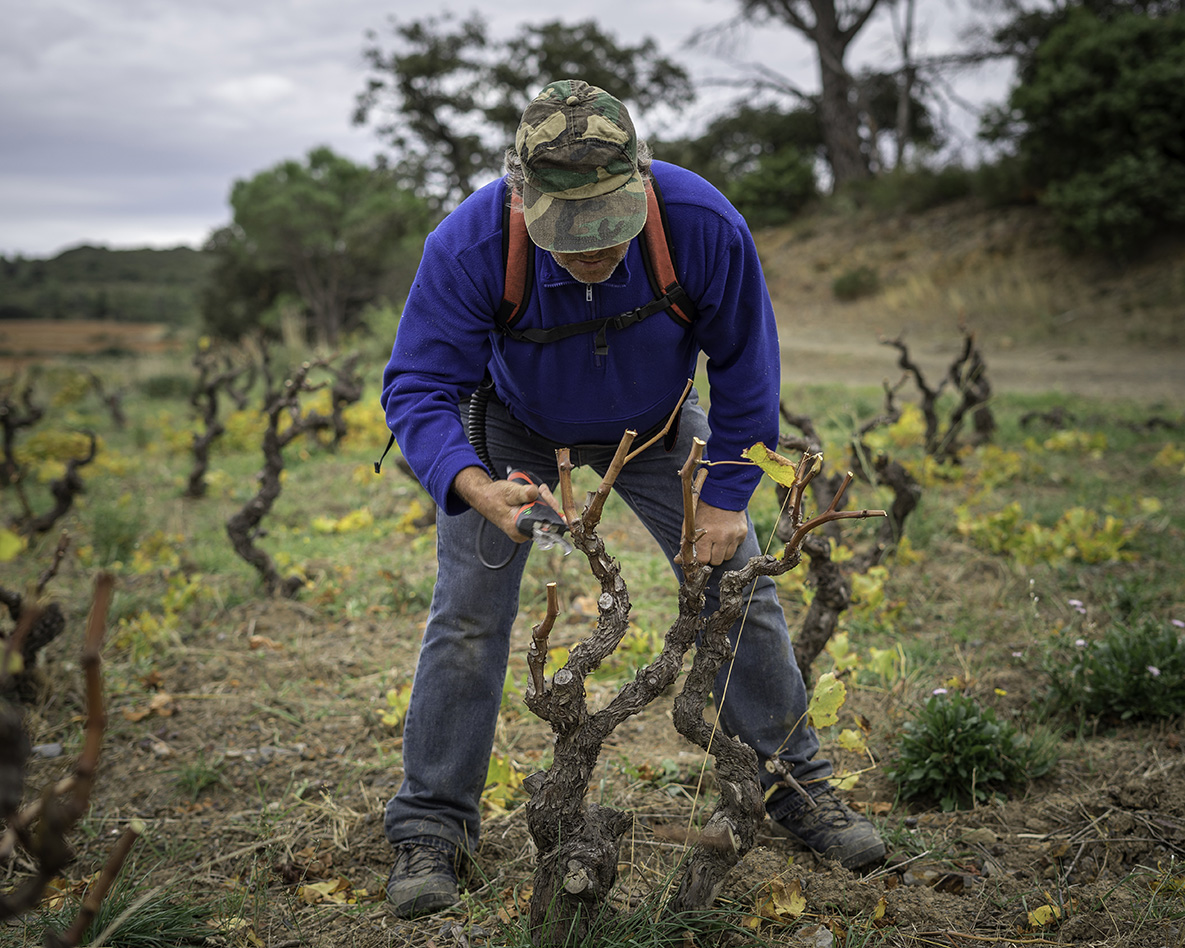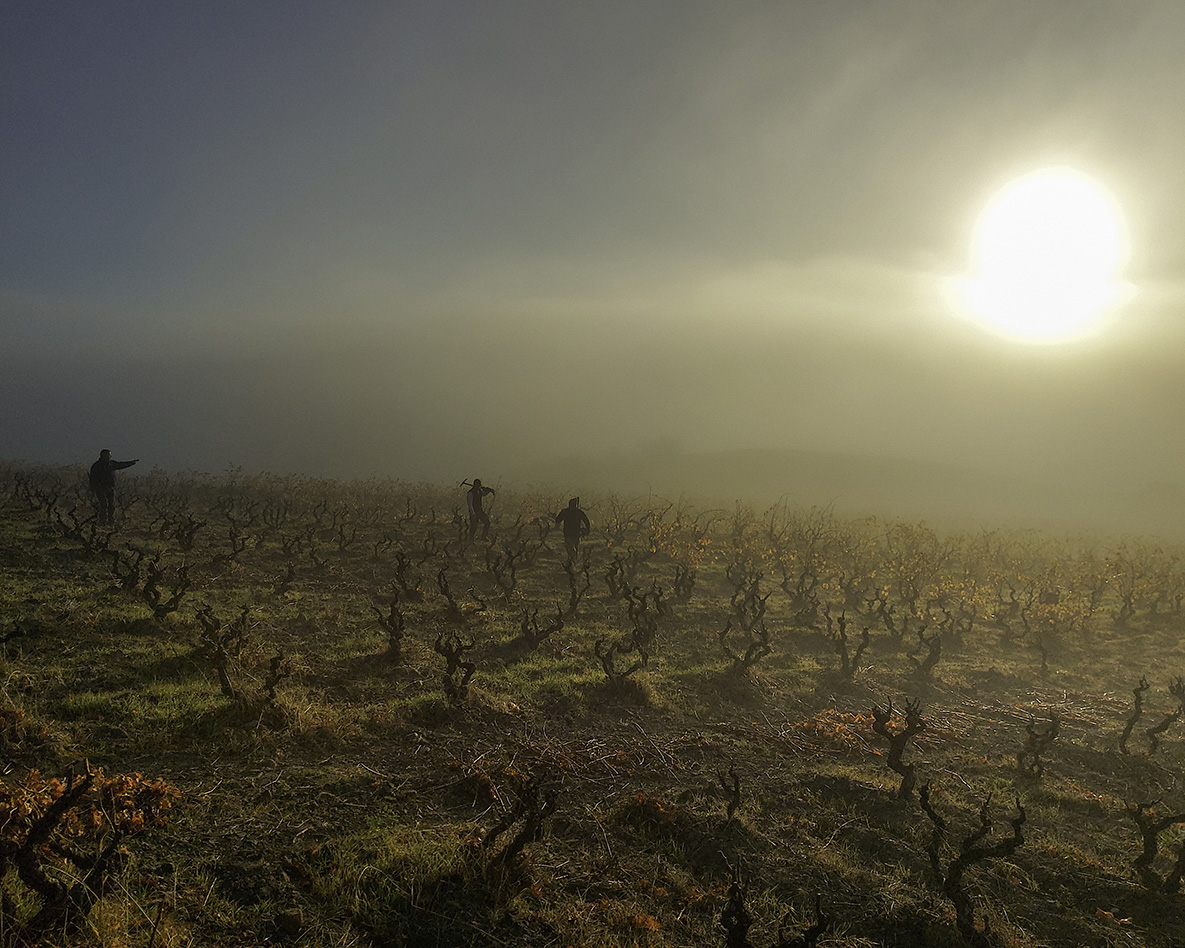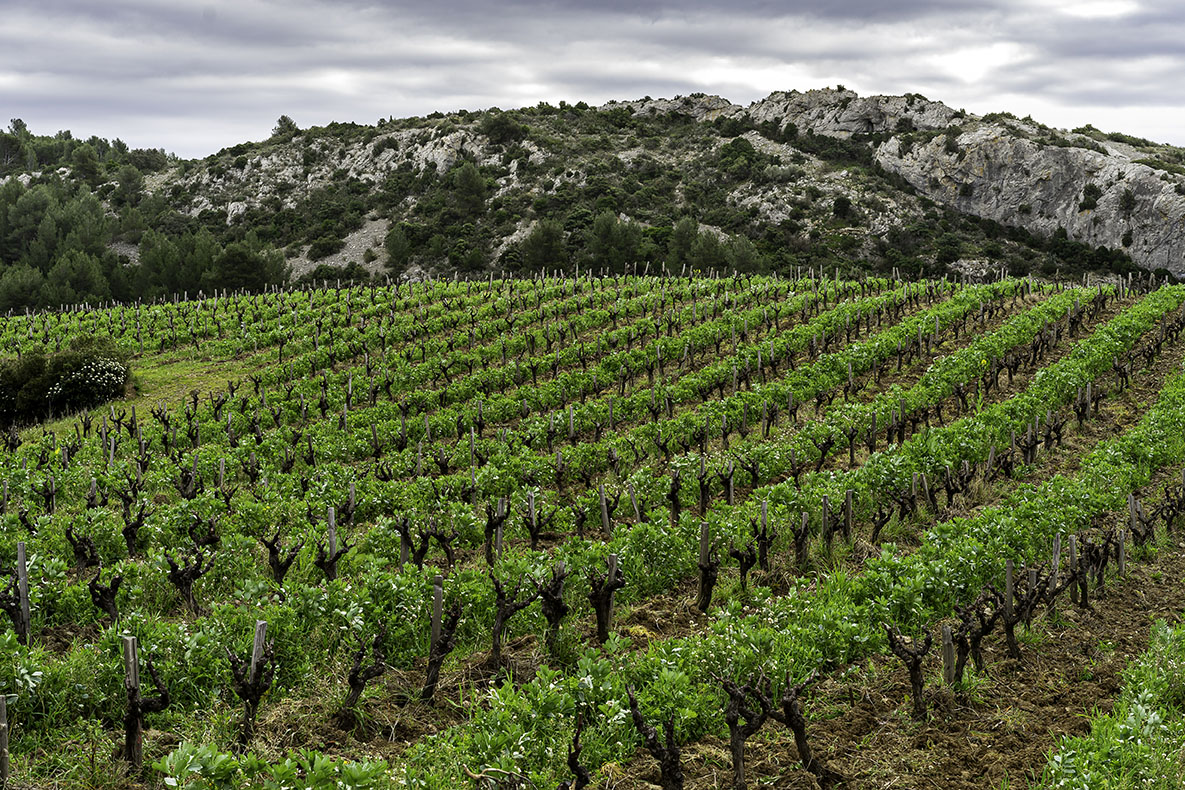To reverse this situation we began to sow green ground cover between the rows in winter. In our conditions, perfecting such a method required several years. Practically speaking, we chose various crop species of cereal (rye, oats…), legume (pea, vetch…) and crucifer (mustard, fodder rape…) all of which grow from the end of autumn till the end of winter when the vine lies dormant. Then, when the vines begin to bud in spring we destroy the crop cover mechanically, leaving a mulch on the surface that disintegrates into the soil.
– Consistent with our new approach, we now replant our vineyards on regenerated soils: we have reduced the area under vines by 10% which enables us to install a perennial leguminous crop (alfalfa, sainfoin) for at least five years between ripping up an old vineyard and replanting it.
-Should the amount of crop cover be insufficient, either between the rows or in a ripped-up plot, we add manure and/or crushed wood chips to trigger the biological process involved. Such a boost generally ensures good ground cover.
Weed control between the rows is carried out using mechanical tools that score the ground without turning the topsoil, working it to a depth of no more than 15cm, thus eliminating any competition from weeds during the vines’ growing period.




Among the vines
Most of the vines we cultivate were planted by our parents and grandparents in the 1950-60’s. In those days, when the flagship wines were the fortified (and sweet) VDNs, swathes of Black, White and Grey Grenache were planted along with some Macabeu. Carignan, too, was the overwhelming variety for making the dry reds. Today, these grape varieties still make up the core of our vineyards.
In more recent years, we have re-introduced massal selection (choosing the best plants amongst our vines for grafts the traditional varieties) in order to maintain the diversity of genetic potential throughout the vineyards and because such selections better suit our objectives -reasonable quantities with smaller bunches. The cuttings selected for grafting come from our estate’s oldest vinestocks as well as through exchanges with other winegrowers.
In training and pruning, we have kept as much as possible to the traditional “bush” pruning system. Its strong points are the enhanced drought resistance it brings to the plants and an overall uniform ripening process. Furthermore, it also provides a cooler shaded zone for the bunches at the hottest time of the day (midday sun between noon and 2 o’clock). In our view, such advantages override its handicap for mechanical harvesting which in any event is impossible on our steep hillsides.
We control fungus diseases (mildew and oïdium i.e. downy mildew) by spraying with sulphur to which we add plant extracts (stinging nettle, comfrey…) as well as homeopathic doses of copper-based Bordeaux mixture. To prevent damage to the bunches from grape caterpillars, the moths are controlled using pheromone dispensers.
We harvest the grapes by hand. Our pickers, who have been coming to us for years, know the vineyards and pick with care. We have kept the old accommodation in the village to house them all and, along with the other seasonal workers, they form the “melting pot” that animates the villages every autumn.
The harvesting date is determined by tasting the grapes: before deciding just when to start, it’s vital to get an idea of what the wine from these berries will turn out like. We need to discern the precursers of potential aromas, assess the acidity, the finesse of the tannin and, of course, the likely alcoholic degree by measuring the sugar content. The harvesting period lasts for over a month, from mid-August to the end of September. We begin by picking the white grapes for our dry whites (white and grey Grenache and Macabeu) and then for the sweet Muscat VDN (Alexandria and small-berry Muscat). The red grapes come next (Syrah, black Grenache and Carignan) and we finish with the other VDNs (black and grey Grenache).

